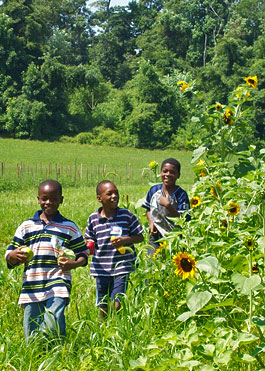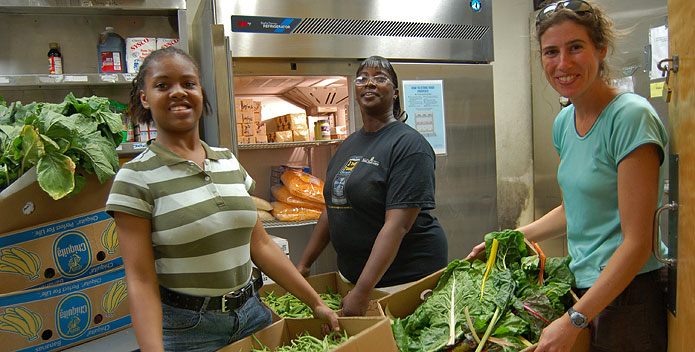Feeding the Hungry
Here's how it works.
Customers of Clagett's community supported agriculture (CSA) program buy shares of the farm's harvest beforehand, and collect whatever is in season weekly, from salad greens in early May through winter squash in November. Participants can pick up their shares in Annapolis, Maryland or at the farm in Upper Marlboro, which is only 14 miles east of the U.S. Capitol Building, just off the Capital Beltway. In addition, the CSA offers reduced-price shares and work shares to low-income families. An extensive group of volunteer weeders and pickers helps to keep the program's operating costs low.
The result is that people of all income levels in the Washington, D.C. region can receive top-quality vegetables and fruits from this local farm, while helping to support an extraordinarily effective and efficient food bank that speaks to the needs of people around our Nation's Capital.
Regular customers pay a rate that covers enough program expenses to allow the farm to donate 30-35 percent of its annual production to low-income people through the Food Bank. That's about 35,000 pounds of produce a year on average. Therein lies the second half of the "From the Ground Up" story. The Food Bank carefully selects recipient member agencies—food pantries, clinics, after-school programs, soup kitchens, and shelters—with the organizational strength and the facilities to maintain quality and efficiently distribute a broad range of produce to its clients. Since 2020, during the pandemic, we have been growing our partnerships to help meet the higher demand of those in need of fresh produce in Prince George's County. Working with PGC Food Rescue we are able to distribute food each week to a network of food pantries and schools.
Feeding the Soul

Students enjoy a day on the farm.
CBF Staff
The Food Bank also offers a wide variety of educational programs. Some of these programs are in the form of classes and demonstrations, including getting D.C. kids out to Clagett for actual harvesting and other farm fun.
Recently seen at Clagett: children from the city ride a hay wagon, arrive at a farm field, and spread out excitedly to pick sweet corn, okra, and tomatoes under the careful supervision of Clagett Farm's Vegetable Production Manager, who shows them how to pick the produce respectfully. They bring their prizes back to the wagon in bins and head to the farm's washing station to clean them for transport to the Food Bank.
An important element of the CBF/Farm Bank collaboration is an orientation day for participating agencies. The following excerpted letter, addressed to Food Bank staffer Dylan Menguy, demonstrates the value of this orientation:
"I left the farm with a wealth of information, and I felt empowered to educate my staff and community on the miracles occurring at Clagett Farm. I know that if I had not taken the time to go to the Clagett Farm orientation, I would have missed a great opportunity to learn about the great works of the farm.
Thank you. I am grateful for the opportunity."



